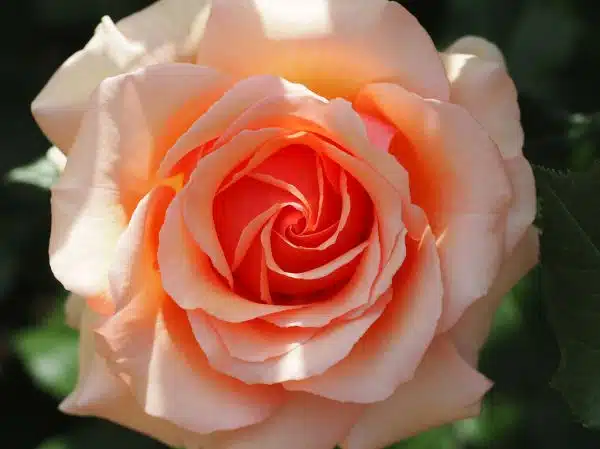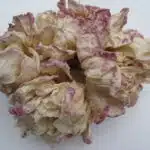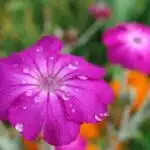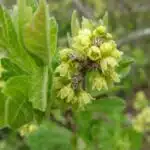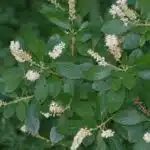Roses have been cultivated for centuries, and their fragrance has enchanted people all over the world. Their scent is not only pleasing to the senses but also has therapeutic benefits, improving one’s mood and reducing stress levels. With so many varieties of roses available in the market, it can be challenging to decide which ones to grow. In this article, we will explore ten types of fragrant roses that are easy to cultivate and perfect for anyone who loves gardening or wants to add some beauty and aroma to their outdoor space.
Roses are a diverse group of flowering plants that come in various colors, shapes, sizes, and fragrances. They belong to the genus Rosa, which comprises over 100 species and thousands of cultivars. Roses are known for their delicate petals, thorny stems, and sweet-smelling blooms that attract pollinators like bees and butterflies. The fragrance of roses varies from light and fruity to strong and spicy, depending on the type of rose. In this article, we will delve into ten different types of fragrant roses that are sure to delight your senses with their exquisite aroma.
The History Of Rose Cultivation
The history of rose cultivation can be traced back to ancient times, with evidence of roses being grown in China over 5,000 years ago. From there, the cultivation of roses spread to other parts of the world, including Europe and the Middle East. In fact, it was the Romans who first discovered the fragrant properties of roses by using them to make perfumes.
Over time, various species of roses were cultivated for their unique characteristics. For example, the Damask rose was known for its strong fragrance and was used extensively in perfume making during the Middle Ages. The Gallica rose, on the other hand, was prized for its stunning deep red color and was often used as a symbol of royalty.
Today, there are thousands of different varieties of roses that have been developed through selective breeding and genetic modification. Despite these advances in rose cultivation technology, many gardeners still prefer to grow heirloom varieties that have been passed down through generations due to their historical significance and beauty. Understanding the evolution of rose cultivation is essential for appreciating these beautiful flowers today.
Moving forward into understanding rose anatomy, it is important to note that each part plays a significant role in how a rose functions and appears aesthetically.
Understanding Rose Anatomy
To grow fragrant roses successfully, it is essential to have a basic understanding of their anatomy. The petal structure and fragrance are two crucial components that make roses so captivating. The petal structure of a rose consists of four layers – the outer layer, the middle layer, the inner layer, and the basal layer. Each layer plays a significant role in determining the overall shape and size of the flower.
The outermost layer of petals is known as sepals, which are usually green in color and protect the bud before it blooms. The next three layers consist of petals that are often soft to the touch and come in a range of colors from white to dark red. Fragrance is one of the most desirable qualities in roses that gardeners look for while selecting varieties to grow. It is important to note that not all roses have fragrant flowers; some are bred for their ornamental value rather than scent.
Understanding rose anatomy can help you choose fragrant varieties that will thrive in your garden. Petal structure determines how long-lasting flowers will be and how they hold up against pests and diseases. Additionally, knowing which type of rose produces a particular fragrance can make all the difference when creating your garden’s ambiance. When selecting roses based on their fragrance, consider factors such as intensity, complexity, and subtlety.
Now that we understand rose anatomy let’s delve into factors to consider before growing roses. Knowing these factors can help you create an optimal environment where your chosen varieties can thrive. From soil pH levels to sunlight exposure requirements, each factor plays a critical role in ensuring healthy growth and blooming flowers. By taking time to consider these factors before planting your roses, you’ll be well on your way towards achieving a beautiful garden full of fragrant blooms!
Factors To Consider Before Growing Roses
Climate is an important factor to consider when growing roses, as some roses may require a certain temperature range or season for optimal growth. The type of soil should also be taken into account, as roses prefer well-draining soil with an acidic pH. Adequate sunlight is essential to ensure proper growth, as roses need 6-8 hours of direct sunlight daily. Watering should be done deeply and infrequently, while space should be taken into account to allow for proper air circulation. Pruning, fertilizing, pest control, and disease resistance are important considerations when selecting the right roses variety. Planting time, mulching, support structures, container gardening, and companion planting are also factors to consider before growing roses.
Climate
When considering growing roses, it is important to take into account the climate of your region. Some rose species thrive in hot climates while others prefer cooler temperatures. For those living in warmer areas, choosing the right rose variety can be crucial to ensure successful growth and a beautiful garden. Some rose species that are suitable for hot climates include the Knock Out Rose, Desert Rose, and Yellow Lady Banksia.
On the other hand, individuals who live in colder regions may have different options when it comes to selecting fragrant roses. In these areas, hardy varieties such as the Canadian Explorer Roses or David Austin English Roses may be better suited for growth. These types of roses are able to withstand harsh winter conditions and still produce beautiful blooms with lovely scents.
Ultimately, when deciding on which type of fragrant rose to grow, it is essential to consider your climate and choose a variety that will thrive in those conditions. With careful selection and proper care, you can enjoy the beauty and fragrance of roses in your garden year after year.
Soil
When it comes to growing fragrant roses, there are several factors that must be considered before planting. One crucial element is the soil. The right soil will ensure that your roses get the proper nutrients they need to grow and bloom beautifully. Before planting, it is essential to prepare the best soil for fragrant roses.
The first step in preparing the ideal soil is to test its pH level. Roses typically prefer slightly acidic soil with a pH between 6.0 and 6.5. To achieve this, add organic matter such as compost or well-rotted manure to the soil. This will help improve drainage and provide nutrients for your plants.
In addition to using the right type of soil, fertilization is also important in maintaining healthy roses. Use a balanced fertilizer with equal amounts of nitrogen, phosphorus, and potassium to promote growth and flowering. It is recommended to fertilize once a month during the growing season, but be careful not to overdo it as this can lead to excessive foliage growth at the expense of blooms. By following these guidelines for soil preparation and fertilization, you can enjoy beautiful and fragrant roses in your garden.
Sunlight
When it comes to growing roses, there are various factors that need to be considered. One of the most critical elements is sunlight. Without proper exposure, roses will not thrive and bloom beautifully. For gardeners who want to grow fragrant roses, it is essential to understand the best exposure and optimal hours of sunlight for these plants.
The best exposure for roses is full sun, which means at least six hours of direct sunlight each day. When choosing a location for your rose garden, it’s crucial to find a spot that receives ample sunlight throughout the day. However, if you live in an area with hot summers, you may want to consider partial shade in the afternoon to protect your roses from heat stress.
In addition to finding the best exposure for your roses, it’s also important to consider the optimal hours of sunlight. Roses prefer morning sun as it helps dry up any moisture on the leaves and prevents fungal diseases from forming. Ideally, roses should receive their six hours of direct sunlight in the morning rather than during midday or late afternoon. By providing your roses with the right amount of sunlight at the optimal time of day, you can ensure they grow healthy and fragrant blooms.
Hybrid Tea Roses
To ensure that your roses will thrive, it’s crucial to choose the right type of rose for your garden. Hybrid tea roses are a popular choice due to their large and fragrant blooms. However, if you’re looking for a more low maintenance option, floribunda roses may be a better fit.
When it comes to growing hybrid tea roses, pruning techniques are key to encourage healthy growth and abundant blooms. Deadheading spent flowers and cutting back stems in the early spring will help promote new growth and prevent disease. Additionally, providing adequate air circulation by spacing plants apart can also help prevent fungal infections.
Floribunda roses, on the other hand, are known for their clusters of small but abundant blooms. These roses are generally easier to care for than hybrid tea roses as they require less pruning and are more disease-resistant. However, disease prevention strategies such as proper watering techniques and regular monitoring for pests should still be implemented to ensure healthy growth.
Transitioning into the subsequent section about floribunda roses: If you’re interested in exploring the world of fragrant roses further, consider adding floribunda roses to your garden. These versatile plants come in a wide range of colors and require minimal maintenance while still providing ample beauty and fragrance.
Floribunda Roses
Floribunda roses are a popular choice for gardeners due to their abundant blooms that come in clusters. These roses are the result of crossing hybrid tea roses with polyantha roses, which has resulted in a hardy plant that is easy to care for. Floribunda roses come in a wide range of colors, including pink, yellow, red, and white, making them a versatile addition to any garden.
When it comes to pruning floribunda roses, it’s important to do so at the right time of year. The best time to prune these roses is in late winter or early spring before new growth begins. Remove any dead or diseased wood first before trimming back any remaining stems by about one-third of their length. This will help promote new growth and encourage the rose bush to produce more flowers.
Floribunda roses can also benefit from companion plants such as lavender and catmint. These plants not only add visual interest but can also help repel pests such as aphids and spider mites. When planting companion plants, be sure to space them properly so they don’t compete with the rose bush for nutrients and water. With proper pruning and thoughtful companion planting, your floribunda rose bush will thrive and provide beautiful blooms for years to come.
As we move on to discussing grandiflora roses, it’s important to note that these roses are a cross between hybrid tea roses and floribunda roses. This results in a plant that produces large flowers similar to those of hybrid tea roses but with clusters like those of floribundas. In the next section, we’ll explore the characteristics of grandiflora roses and how they differ from other types of fragrant roses available for growing in your garden.
Grandiflora Roses
Grandiflora roses are a popular type of fragrant rose that produces large, showy blooms. These roses typically have long stems that make them ideal for cutting and displaying in vases. There are several types of grandiflora roses to choose from, including the ‘Queen Elizabeth’, which features pink blooms with a mild fragrance, and the ‘Gold Medal’, which boasts yellow-gold petals with a strong scent.
When it comes to caring for grandiflora roses, there are a few tips to keep in mind. First and foremost, these roses require plenty of sunlight to thrive. Be sure to plant them in an area that receives at least six hours of direct sunlight each day. Additionally, grandiflora roses prefer well-draining soil that is rich in nutrients. You may need to amend your soil with compost or other organic matter before planting.
Pruning is also important when it comes to keeping grandiflora roses healthy and vibrant. In general, you should prune these roses in late winter or early spring while they are dormant. Remove any dead or diseased wood, as well as any stems that are crossing over each other or growing towards the center of the plant. With proper care and attention, your grandiflora roses will reward you with stunning blooms year after year.
As we move on to our next section on climbing roses, it’s important to note that these types of fragrant roses differ significantly from grandifloras in terms of their growth habits and care requirements. While grandifloras produce large blooms on long stems, climbing roses grow vertically up walls, trellises, or arches. Let’s take a closer look at how to care for these beautiful plants in our next section.
Climbing Roses
Grandiflora roses are known for their large, showy blooms that appear in clusters. However, when it comes to fragrant roses, climbing varieties are a great option to consider as well. Climbing roses can add beauty and fragrance to any garden, while also creating a stunning vertical display.
One important aspect of growing climbing roses is pruning techniques. It is important to prune these roses properly in order to encourage healthy growth and abundant blooms. Pruning should be done in the late winter or early spring before new growth begins. Remove any dead or damaged wood, as well as any crossing branches that may rub against each other and cause damage. Train the remaining branches to grow along your chosen trellis or support structure.
When it comes to trellising methods for climbing roses, there are several options available depending on personal preference and space limitations. Some popular trellising methods include using posts and wires, arches, or even walls as support structures for your climbing roses. Make sure your support structure is sturdy enough to hold the weight of your rose plant once it has matured.
Moving on from climbing roses, another type of fragrant rose worth considering is the shrub rose. These types of roses are known for their hardiness and disease resistance, making them an easy choice for beginner gardeners. Stay tuned for our next section where we will discuss different varieties of shrub roses that you can grow in your own garden!
Shrub Roses
Shrub roses are the backbone of any garden. They are versatile and add a touch of elegance to any landscape. These roses grow in a bushy, upright form that makes them perfect for hedging, screening or as a specimen plant. Shrub roses have an abundance of blooms that give off a sweet fragrance that fills the air with their delicate scent.
Pruning techniques play an essential role in maintaining the health and beauty of your shrub roses. As they grow, shrub roses require regular pruning to promote new growth and prevent disease. Prune in late winter or early spring before new growth begins. Remove dead, diseased or damaged wood to encourage healthy new growth.
Disease prevention is crucial when growing shrub roses. Powdery mildew and blackspot are common diseases that can affect these types of roses. To prevent these diseases from spreading, always remove infected leaves and debris from around your plants. Practice good sanitation and avoid overhead watering to prevent water from sitting on the leaves, which can lead to fungal infections.
Moving onto the next section, miniature roses are ideal for those who love the beauty of roses but have limited space for gardening.
Miniature Roses
Miniature roses are a popular choice for gardeners who want to add a touch of elegance and beauty to their landscapes. These roses are smaller in size than traditional roses, but they are just as fragrant and beautiful. They come in a wide variety of colors, from classic reds and pinks to bold oranges and yellows.
Growing miniature roses is relatively easy with the right techniques. These roses thrive in well-drained soil that is rich in organic matter. They require regular watering, but it’s important not to overwater them as this can lead to root rot. Miniature roses also benefit from regular fertilization, which should be done every few weeks during the growing season.
Some popular varieties of miniature roses include ‘Cinderella’, ‘Bambino’, and ‘Gourmet Popcorn’. ‘Cinderella’ has small pink flowers that bloom continuously throughout the growing season. ‘Bambino’ has yellow flowers that are perfect for adding a pop of color to any garden. Finally, ‘Gourmet Popcorn’ has white flowers that have a strong fragrance reminiscent of popcorn.
Transitioning into the subsequent section about English Roses: Now that we’ve covered some growing techniques and popular varieties of miniature roses, let’s move on to another type of fragrant rose – English Roses.
English Roses
English Roses are a type of fragrant rose, known for their strong and sweet scent. They are characterized by their full, rounded shape, strong stems and longer-lasting blooms. When planting English Roses, it is important to ensure that they have plenty of sunlight and well-drained, fertile soil. For best performance, they should be pruned regularly and deadheaded often.
Characteristics
The English Roses, also known as David Austin Roses, are a popular choice among garden enthusiasts due to their striking beauty and alluring fragrance. These roses have been cultivated by David Austin since the 1960s and are a result of crossbreeding between old-fashioned roses and modern hybrid tea roses. Growing techniques for these roses involve proper soil preparation, adequate watering, pruning, and fertilization.
One of the main characteristics of English Roses is their unique aroma that varies from one cultivar to another. Aroma analysis of these roses reveals that they have a complex composition of volatile compounds that contribute to their distinct scent. Some cultivars like Gertrude Jekyll and Munstead Wood have a strong myrrh scent, while others like Lady Emma Hamilton and Princess Alexandra of Kent have fruity notes with a hint of clove.
English Roses come in various types based on their growth habit, flower form, and color. The shrub varieties can grow up to 5 feet tall and produce clusters of blooms throughout the season. The climbing varieties can reach up to 10 feet tall and need support structures like trellises or fences. The flower forms range from cupped to rosette-shaped with petals that are densely packed for an elegant look. Colors vary from soft pastels like pink and peach to vibrant hues like red and yellow.
In conclusion, growing English Roses requires careful attention to detail in terms of soil preparation, watering, pruning, and fertilization. Aroma analysis reveals that there is a wide range of scents available among different cultivars. With various types available based on growth habit, flower form, and color, there is no shortage of options when it comes to choosing the perfect fragrant rose for your garden.
Planting Tips
Planting English Roses requires careful consideration of planting techniques and soil requirements. The ideal planting time is during the dormant season, which is usually in late fall or early spring. Before planting, it is essential to prepare the soil by removing any weeds or debris and adding organic matter such as compost or well-rotted manure. This will help improve the soil’s structure and nutrient content, ensuring healthy growth for your roses.
When planting English Roses, it is important to dig a hole that is wide enough to accommodate the root ball and deep enough so that the graft union (the swollen area where the roots meet the stem) is at ground level. It is also recommended to water the rose before planting and soak the root ball in water for at least an hour before placing it into the hole. After filling in around the root ball with soil, give it a good watering to settle the soil and eliminate any air pockets.
To ensure your English Roses thrive, it’s crucial to provide them with proper care after planting. Water them regularly but avoid overwatering as this can lead to root rot. Mulching around the base of the plant can help retain moisture in the soil while also suppressing weeds. Regular fertilization will also promote healthy growth and blooming throughout the season. With these planting tips in mind, you can enjoy beautiful and fragrant English Roses in your garden for years to come.
Old Garden Roses
English Roses, with their strong fragrance and repeat blooming capabilities, are a popular choice for garden design. However, for those seeking a more traditional option, Old Garden Roses offer an array of fragrant choices. These roses were cultivated before the introduction of hybrid teas in the 19th century and include several varieties such as Gallicas, Bourbons, and Damasks.
One of the defining characteristics of Old Garden Roses is their pruning techniques. Unlike modern roses that require hard pruning to encourage new growth, most Old Garden Roses only need light pruning to maintain their shape and remove dead wood. This means less work for the gardener and allows the rose to grow into its natural form.
When it comes to fragrance, Damask Roses are a standout among Old Garden Rose varieties. Their rich perfume has been used in perfumes and cosmetics for centuries. In addition to their scent, they also have beautiful pink or white blooms that can be used in floral arrangements or enjoyed in the garden. With proper care, these fragrant roses can be a stunning addition to any garden design.
Damask Roses
Damask Roses have a long and rich history, having been cultivated in the Middle East since antiquity. The Damask Rose has long been prized for its fragrant qualities and is also highly sought after for its beauty. There are various varieties of Damask Roses, including Rosa damascena, Rosa gallica, and Rosa alba. Each variety offers its own unique characteristics in terms of fragrance, color, and size.
History Of Damask Roses
The history of Damask roses is steeped in cultural significance dating back to ancient times. These roses were discovered in the Middle East and quickly gained popularity due to their distinct fragrance and exquisite beauty. In fact, it is said that Cleopatra used the petals of these roses to adorn her palace floors and bed chambers.
Growing techniques for Damask roses have been passed down from generations due to their valuable contribution to society. These roses were not just known for their aesthetic appeal but also for their medicinal properties. The oil extracted from the petals was used in various remedies for ailments such as depression and anxiety. Today, these roses are still grown using traditional techniques such as hand pruning and organic fertilizers to preserve their authenticity.
The cultural significance of Damask roses has stood the test of time and continues to be celebrated today. With its rich history and unique qualities, it’s no wonder why so many gardeners choose to grow this fragrant rose variety. From ancient royalty to modern-day enthusiasts, this rose has captured the hearts of many with its timeless charm.
Varieties Of Damask Roses
Damask roses are a popular variety of roses known for their unique fragrance and beauty. These roses have been cultivated for centuries, and there are several varieties of Damask roses that gardeners can choose from. One of the most popular varieties is the Rosa Damascena, which is commonly used in rose oil production due to its high oil content.
Another variety of Damask rose is the Quatre Saisons, which is known for its repeat blooming throughout the year. This variety has a delicate pink color and a strong fragrance that makes it a popular choice among gardeners. In addition to their use in rose oil production, Damask roses also have culinary uses. The petals can be used to make jam, syrup, or tea, and they are often used in Middle Eastern cuisine.
Overall, Damask roses offer both aesthetic and practical benefits to those who grow them. With their rich cultural history and unique qualities, these roses continue to capture the hearts of many. Whether you’re interested in using them for rose oil production or simply want to enjoy their fragrance in your garden or kitchen, there’s no denying that Damask roses are an excellent choice for any gardener or horticultural enthusiast.
Bourbon Roses
Bourbon roses are an excellent choice for gardeners who want the best of both worlds – beauty and fragrance. Bourbon rose cultivation is a rewarding experience, as these roses are known for their rich, velvety blooms that come in shades of pink, red, and white. They also have a strong, sweet scent that can fill up your garden with its aroma.
When it comes to selecting the best fragrant bourbon roses to grow, there are several options to choose from. One of the most popular choices is ‘Louise Odier,’ which has large pink blooms with a strong fragrance. Another option is ‘Zephirine Drouhin,’ a thornless climber that produces deep pink flowers with a spicy scent. ‘Souvenir de la Malmaison’ is another popular choice among gardeners due to its pale pink flowers that have a strong fragrance and repeat bloom throughout the season.
Bourbon rose cultivation requires full sun exposure and well-drained soil. It is also important to prune them regularly to encourage new growth and prevent disease. With proper care and attention, these fragrant roses can be an excellent addition to any garden. Now, let’s move on to the next section about rugosa roses and explore some of the best varieties you can grow in your garden.
Rugosa Roses
Rugosa Roses, also known as Japanese Roses, are a species of rose thought to have originated in Japan and Korea. They are a hardy plant, suitable for cold climates, and are tolerant of salt and wind. Rugosa Roses have been popular in gardens since the late 19th century. To ensure optimal health, Rugosa Roses require moist, well-drained soil and full sun. Rugosa Roses are highly fragrant and bloom in a variety of colors, including white, pink, and red. These roses can be used in cut flower arrangements, and their petals can be used to make rose oil, rosewater, and potpourri.
History
The history of rose cultivation is a timeline that dates back to ancient times. However, the Rugosa Roses, also known as Japanese Roses, were not introduced to Europe until the 18th century. These roses were first discovered by a Swedish botanist named Carl Peter Thunberg during his travels in Japan. It was not long before these fragrant and hardy roses became popular among European gardeners.
Throughout history, there have been many famous rose gardens that have showcased the beauty and fragrance of Rugosa Roses. One such garden is the Bagatelle Rose Garden in Paris, which was established in 1777. This garden has over 10,000 rose bushes including many varieties of Rugosa Roses. Another notable garden is the Portland Rose Garden in Oregon, USA, which has over 10 acres of land dedicated to showcasing different types of roses including several varieties of Rugosa Roses.
In conclusion, the history and significance of Rugosa Roses cannot be overstated. From their discovery by Carl Peter Thunberg to their incorporation into famous rose gardens throughout history, these fragrant and hardy roses continue to captivate gardeners and enthusiasts around the world. Their unique features make them an excellent choice for those seeking a versatile and beautiful addition to their gardens.
Plant Care
Rugosa Roses are not only visually stunning but also hardy and easy to care for, making them an attractive option for gardeners. Proper pruning techniques are essential to maintain the health and beauty of these roses. The best time to prune Rugosa Roses is in the late winter or early spring before new growth begins. Dead or diseased wood should be removed, as well as any crossing branches that may cause damage or inhibit airflow within the plant.
Soil preparation is another important factor in maintaining the health of Rugosa Roses. They prefer well-draining soil with a pH level between 6.0 and 7.0. Adding organic matter, such as compost or aged manure, can improve soil quality and drainage. It is also recommended to fertilize Rugosa Roses twice a year with a balanced fertilizer.
In conclusion, proper plant care is crucial for the success of Rugosa Roses in any garden setting. By following proper pruning techniques and incorporating adequate soil preparation measures, gardeners can ensure that their Rugosa Roses thrive and continue to add beauty and fragrance to their landscapes year after year.
Fragrance
Rugosa Roses are not only visually stunning and easy to care for, but they also offer a range of benefits to gardeners. One of the most notable benefits is their fragrance. Rugosa Roses are known for their strong, sweet scent that can fill a garden with their delightful aroma. This makes them an attractive option for those who enjoy spending time outdoors and want to add an extra element of sensory pleasure to their gardens.
Rugosa Roses come in a variety of fragrances, ranging from spicy and citrusy to floral and fruity. Some popular varieties include ‘Fru Dagmar Hastrup’, which has a sweet apple scent, and ‘Hansa’, which has a spicy clove fragrance. The wide range of fragrances available allows gardeners to choose a variety that suits their personal preferences and creates the desired atmosphere in their outdoor space.
Apart from adding a pleasant fragrance to gardens, Rugosa Roses also have therapeutic benefits. Their essential oils are used in aromatherapy for their calming properties and ability to reduce stress levels. Thus, incorporating Rugosa Roses into one’s garden can provide both visual and emotional benefits. Overall, the combination of beautiful blooms and delightful fragrance make Rugosa Roses an excellent addition to any garden setting.
Tips For Growing Fragrant Roses Successfully
Rugosa roses are among the most fragrant roses to grow. However, there are various other types of fragrant roses that one can consider growing. Fragrant roses not only beautify gardens but also add a pleasant aroma that can uplift moods and calm senses.
Tips for growing fragrant roses successfully include selecting the right location and soil type, planting at the right time, providing adequate water and fertilization, pruning regularly, and protecting from pests and diseases. Fragrant roses come in different colors, sizes, shapes, and scents. Some of the most popular types of fragrant roses include hybrid tea roses, floribunda roses, grandiflora roses, shrub roses, and climbing roses.
The table below provides a brief overview of some of the best types of fragrant roses to grow:
| Rose Type | Color Range | Bloom Size |
|---|---|---|
| Hybrid Tea Roses | Multiple shades | Medium-large |
| Floribunda Roses | Pink or yellow | Medium-large |
| Grandiflora Roses | Pink or red | Large |
| Shrub Roses | White or pink | Small-medium |
| Climbing Roses | Red or pink | Small-large |
In conclusion, fragrant roses add an aromatic charm to any garden. By following these tips for growing fragrant roses successfully and selecting the right type based on personal preference, anyone can enjoy the beauty and fragrance of these wonderful plants.
Frequently Asked Questions
How Do I Prevent Pests And Diseases From Damaging My Fragrant Roses?
Organic pest control is an effective way to prevent pests and diseases from damaging fragrant roses. Natural remedies such as neem oil, garlic spray, and insecticidal soap can be used to minimize the impact of pests on roses. In addition to these remedies, maintaining good cultural practices such as removing dead or diseased plant parts, watering properly, and fertilizing appropriately will help keep roses healthy and resilient. It is important to regularly monitor plants for early signs of infestation and take action immediately. By implementing organic pest control methods and using natural remedies, gardeners can protect their fragrant roses without the use of harmful chemicals.
Can Fragrant Roses Be Grown In Containers Or Do They Need To Be Planted In The Ground?
Growing fragrant roses in containers is possible but requires special attention. Just like a fish in a bowl, the rose’s roots will eventually outgrow their container and become root-bound, limiting the plant’s growth potential. It is essential to choose a container that allows proper drainage and has enough space for the roots to spread out. Additionally, selecting a dwarf or miniature variety of fragrant roses will make it easier to maintain its size and shape within the confines of the container. However, planting fragrant varieties in-ground provides more room for growth and better stability due to stronger root systems. Ultimately, whether growing in containers or in-ground, selecting the right type of fragrant roses will ensure success in achieving a beautiful and aromatic garden space.
How Often Should I Prune My Fragrant Roses And What Is The Best Time Of Year To Do It?
Pruning frequency, techniques, and timing are essential for the health and growth of fragrant roses. Deadheading should be done regularly to encourage new blooms and remove dead flowers. Pruning should be done in late winter or early spring, before the new growth appears. The goal is to remove any weak or diseased branches, as well as any crossing branches that may create a tangled mess. It’s important not to prune too much at once so that the plant can recover from the shock of pruning. When pruning, make sure to use clean and sharp tools to avoid damaging the plant. By following these guidelines, fragrant roses can thrive and provide beautiful blooms throughout the growing season.
What Is The Best Way To Fertilize Fragrant Roses For Optimal Growth And Fragrance?
When it comes to fertilizing fragrant roses, gardeners commonly debate whether to use organic or chemical fertilizers. While both options can provide necessary nutrients for optimal growth and fragrance, organic fertilizers are often preferred due to their environmentally-friendly nature. Additionally, it’s important to consider the soil pH when selecting a fertilizer for your fragrant roses. Ideally, the soil should have a pH level between 6.0 and 6.5 for proper nutrient uptake and overall health of the plant. By selecting the right type of fertilizer and ensuring proper soil conditions, gardeners can promote healthy growth and maximize the fragrance of their fragrant roses.
Are There Any Particular Companion Plants That Are Beneficial For Fragrant Roses?
In the world of horticulture, it is well-known that proper companion plants can significantly enhance the growth and fragrance of fragrant roses. The soil preparation for these companion plants should be carefully considered to ensure optimal conditions for both the roses and their companions. When selecting companion plants, one should consider factors such as nutrient requirements, water needs, and pest resistance. While there are many options available, some popular choices include lavender, catmint, and alliums. These plants not only provide an aesthetically pleasing contrast to the roses but also offer benefits such as attracting beneficial insects and repelling harmful pests. By incorporating well-suited companion plants into your rose garden’s soil preparation plan, you can foster a thriving ecosystem that will ultimately lead to healthier and more fragrant roses.
Conclusion
Fragrant roses are a popular addition to any garden, with their sweet scent and beautiful blooms. However, they can be susceptible to pests and diseases, so it is important to take precautions such as regular inspections and proper pruning techniques. Fragrant roses can be grown in containers or in the ground, but the latter option allows for more space and optimal growth.
Pruning fragrant roses should be done regularly to remove dead or damaged branches and promote healthy growth. The best time of year to prune depends on the type of rose, but generally late winter or early spring is recommended. Fertilizing fragrant roses with a balanced fertilizer will help promote strong growth and enhance their fragrance.
Companion plants such as lavender, catmint, and salvia can be beneficial for fragrant roses as they attract pollinators and repel pests. Overall, growing fragrant roses requires some care and attention but the results are well worth it. So why not add some fragrant roses to your garden this season? Can you imagine walking through your yard surrounded by the sweet aroma of blooming fragrant roses?
Image Credits
- “Rose, Fragrant Apricot, バラ, フレグラント アプリコット,” by T.Kiya (featured)

